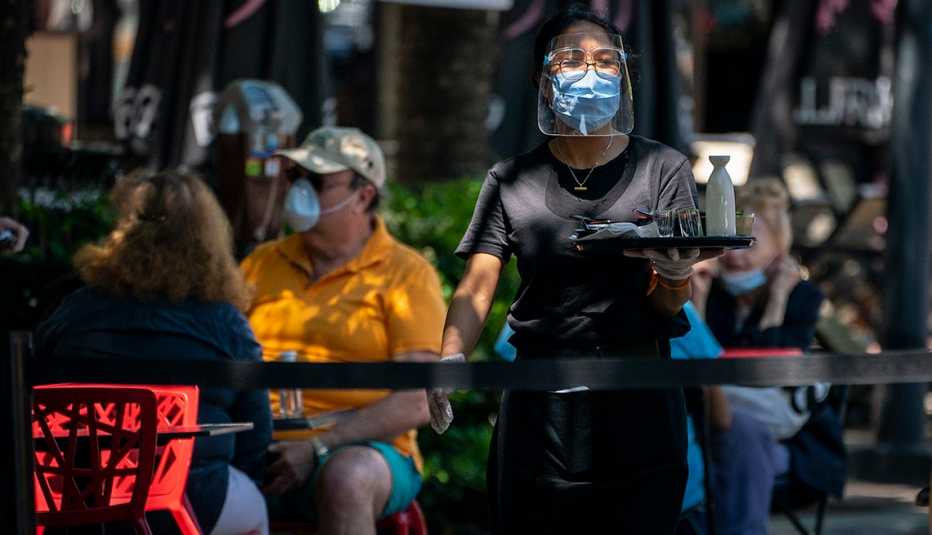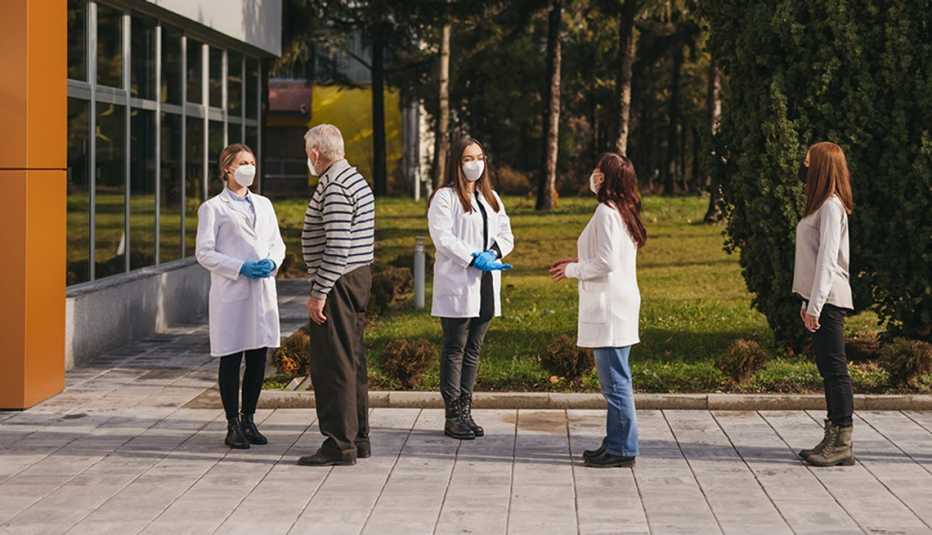AARP Hearing Center
Health care workers and residents of nursing homes are first in line to get vaccinated for COVID-19. The big question has been: Who's next? Recent guidance from a panel of experts that recommends which groups should be prioritized offers a clear list of how they think the order should go.
The limited supply of vaccine dosages available as manufacturers race to make enough to inoculate more than 300 million Americans means that public officials have to make tough decisions about who should get the shots first. According to the Advisory Committee on Immunization Practices (ACIP), the second wave of vaccinations should include frontline essential workers — approximately 30 million people with jobs in grocery stores, public transportation, meat plants, among other businesses — and people age 75 and older. The third wave should include other essential workers (roughly 57 million people), alongside people ages 65–74 and those with high-risk medical conditions.
"What we are providing governors, health officials with is a framework that is supported by evidence and will address this limited supply of vaccine that we have at this time,” Jose Romero, ACIP's chair and also the secretary of the Arkansas health department, said during the meeting where the panel made the recommendations. ACIP, which is comprised of 15 public health experts from across the nation, is a committee run by the Centers for Disease Control and Prevention (CDC). It is ultimately up to individual state governments whether to follow ACIP's prioritization recommendations.
Does your job qualify you as a frontline essential worker or other essential worker? These are the occupations in each group, according to ACIP's recommendations:
Frontline Essential Workers
- First responders. These are the people communities depend on in emergencies, such as firefighters and police.
- Education. Making sure children can grow academically even during a pandemic means vaccinating teachers, their support staff, and daycare employees.
- Food and agriculture. Many of the outbreaks at the onset of the pandemic were in meatpacking facilities and other food-processing plants.
- Manufacturing. These jobs (producing goods) cannot be done remotely.
- Corrections workers. Prisons are the types of closed facilities where the coronavirus can spread quickly.
- U.S. Postal Service workers. The more than 490,000 people in this group make sure your packages get delivered, along with providing other key services.
- Public transit workers. These are the people who make it possible for other essential workers to get to their jobs.
- Grocery store workers. Keeping supermarket employees safe makes it possible for others to stay fed while restaurants are temporarily shut down.
Other Essential Workers
- Transportation and logistics. These are the workers who ensure that stores’ shelves remain stocked and other key supplies get where they're needed.
- Food service. This one could get tricky, as states decide which facilities and restaurants are big enough for their employees to get vaccinated in this group.
- Shelter and housing. These are the construction workers and contractors responsible for the construction and repair of houses and other buildings.
- Finance. Families need financial advisers to help them navigate the recession that has accompanied the COVID-19 pandemic.
- Information technology and communication. Videoconferencing and other internet technologies have become a lifeline for many families and businesses during 2020.
- Energy. Many of the jobs in this field, which includes mining and oil extraction, cannot be done remotely.
- Media. Making sure the public is accurately informed is vital during this public health crisis.
- Legal. While demand for legal services has declined significantly in 2020, these professionals remain essential for many proceedings.
- Engineers. Workers in these occupations play a major public safety role by guaranteeing that projects meet the appropriate standards and guidelines.
- Water and wastewater. Keeping the water supply safe means being able to keep these professionals on the job.
More than half of the people employed in these two groups of essential workers are age 40-plus, according to ACIP.
Each state has the freedom to adapts ACIP's recommendations based on the circumstances in their region, so the vaccination priority process may differ slightly in your area. The speed with which each state moves through each wave depends on how many vaccine doses are available and how many essential workers there are in the region.































































